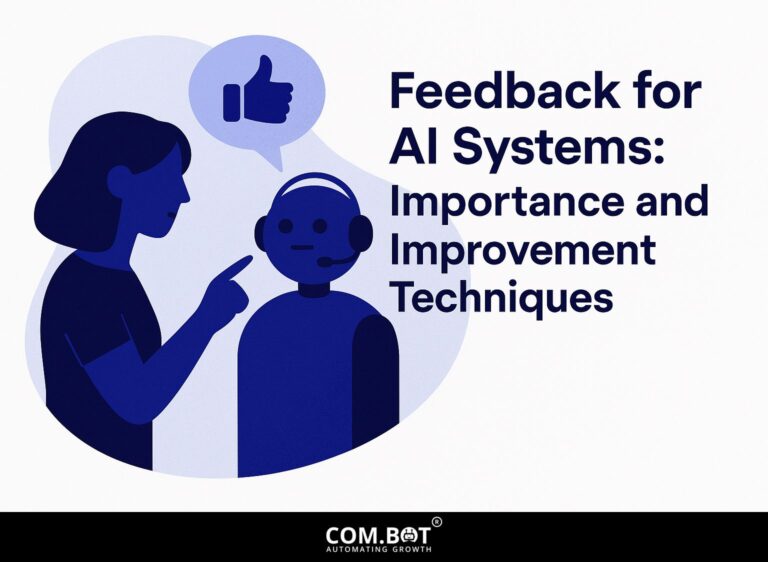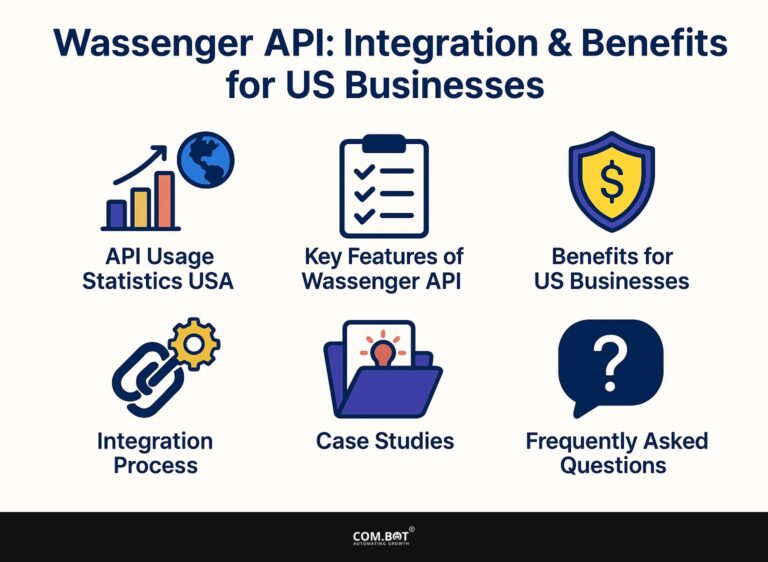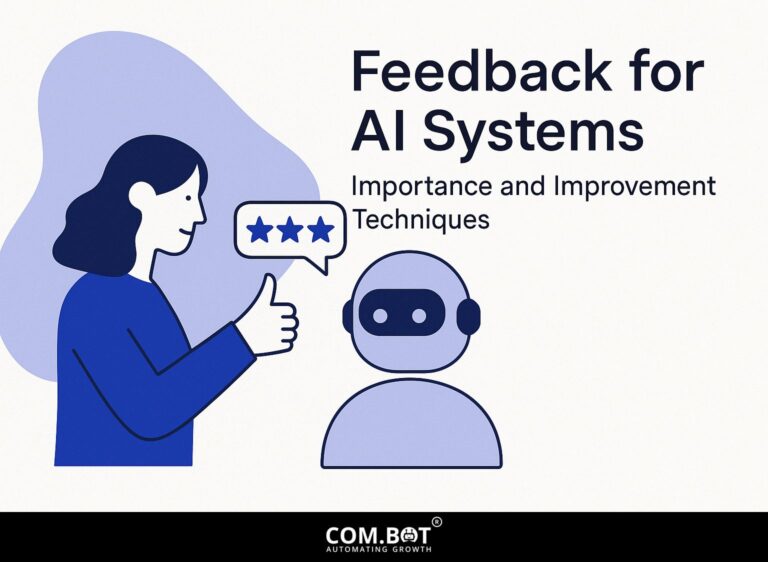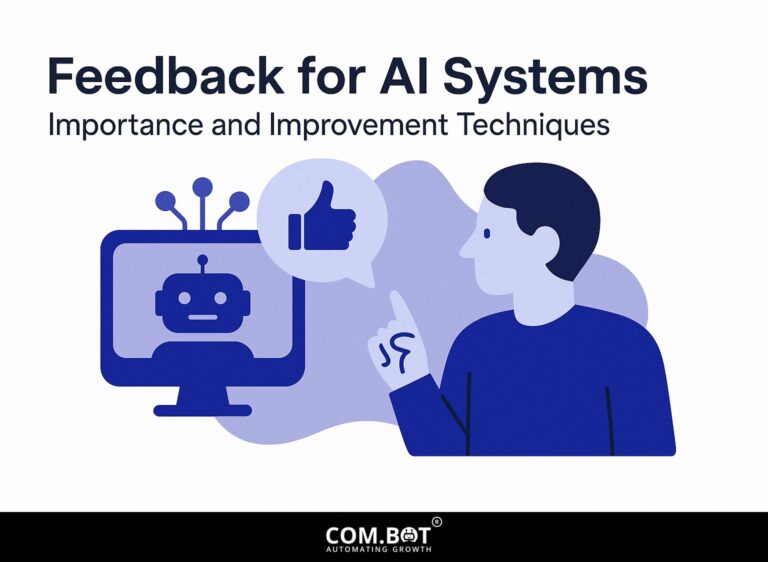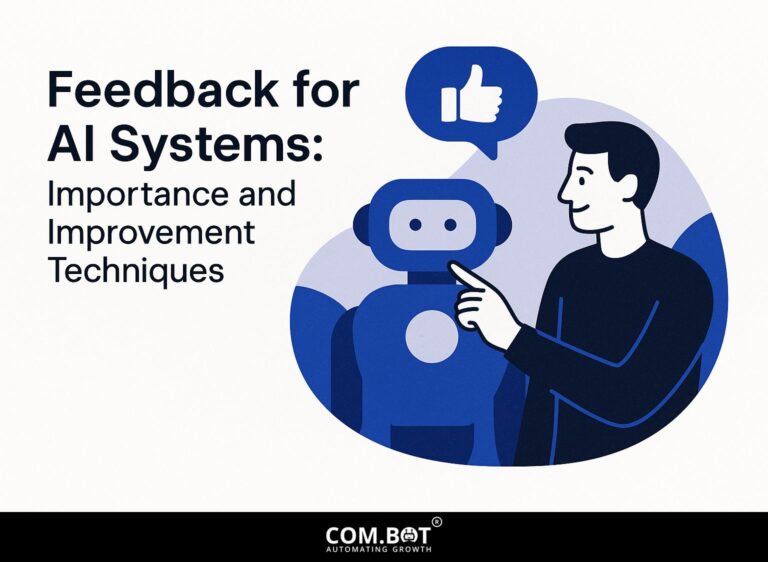Feedback for AI Systems: Importance and Improvement Techniques
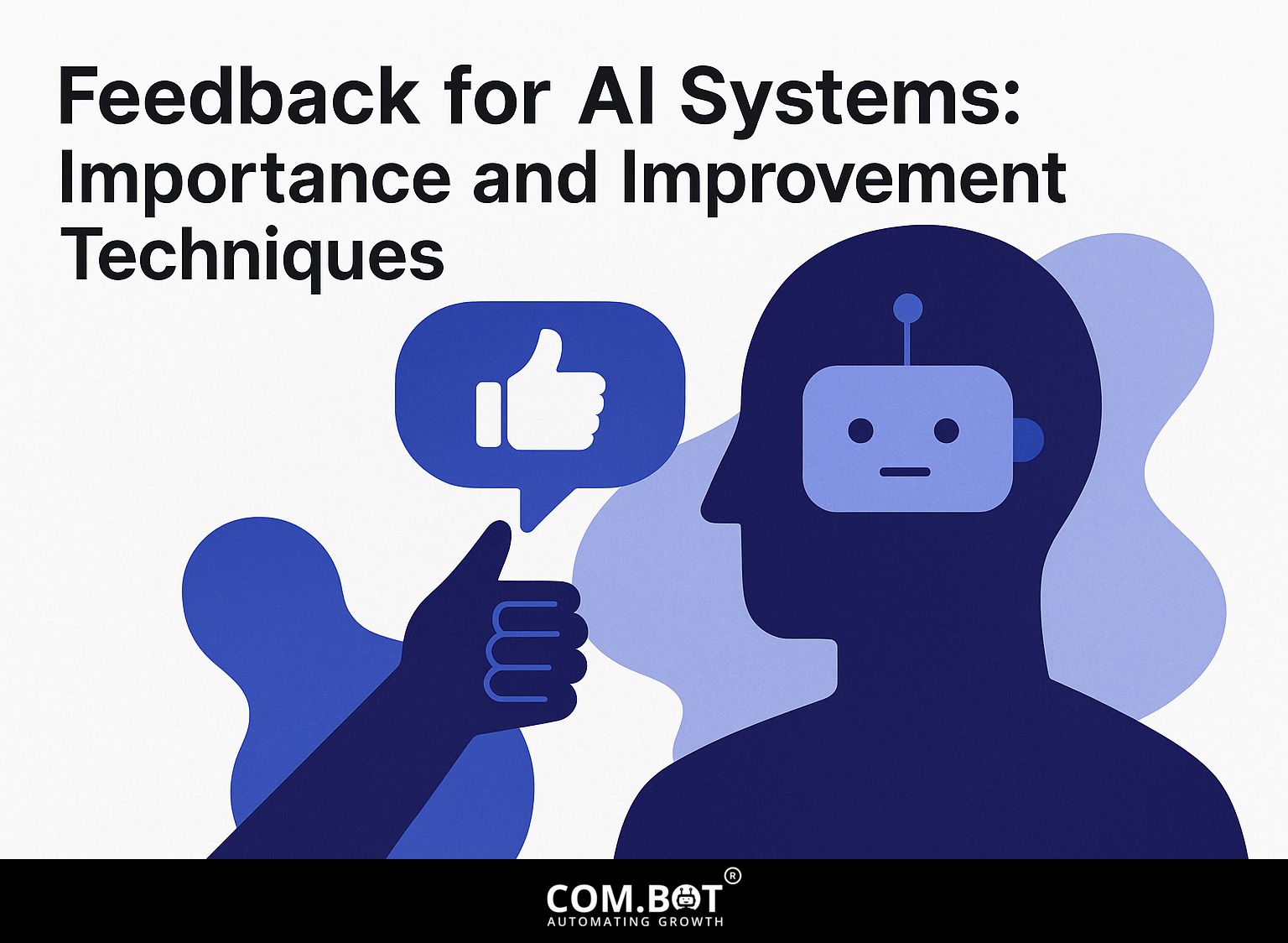
In the fast-changing field of artificial intelligence, setting up a good feedback system is key to improving machine learning models. Feedback is important in generative AI because it helps make the system work better and enhances the user experience. This article explores different ways to get feedback and provides useful tips to use feedback for ongoing improvement of your AI systems. Learn how to use feedback effectively to improve your AI applications.
Key Takeaways:
- 1 The Importance of Feedback
- 2 Types of Feedback Mechanisms
- 3 AI Feedback Mechanism Statistics
- 3.1 AI Feedback Loop Impact: General AI Feedback Influence
- 3.2 AI Feedback Loop Impact: Bias Amplification and Correction
- 3.3 AI Feedback Loop Impact: User Response Change
- 3.4 AI Feedback Loop Impact: Improved Accuracy
- 3.5 AI Feedback Loop Impact: Interaction with AI Systems
- 3.6 Explicit vs. Implicit Feedback
- 3.7 Real-time vs. Batch Feedback
- 4 Techniques for Gathering Feedback
- 5 Analyzing Feedback Data
- 6 Implementing Feedback for Continuous Improvement
- 7 Challenges in Feedback Integration
- 8 Future Trends in AI Feedback Systems
- 9 Frequently Asked Questions
- 9.1 What is the importance of feedback in AI systems?
- 9.2 How does feedback help in the improvement of AI systems?
- 9.3 What are some techniques for obtaining feedback for AI systems?
- 9.4 Why is continuous feedback essential for AI systems?
- 9.5 How can AI systems use feedback to improve their decision-making process?
- 9.6 What challenges can arise in obtaining and using feedback for AI systems?
The Importance of Feedback
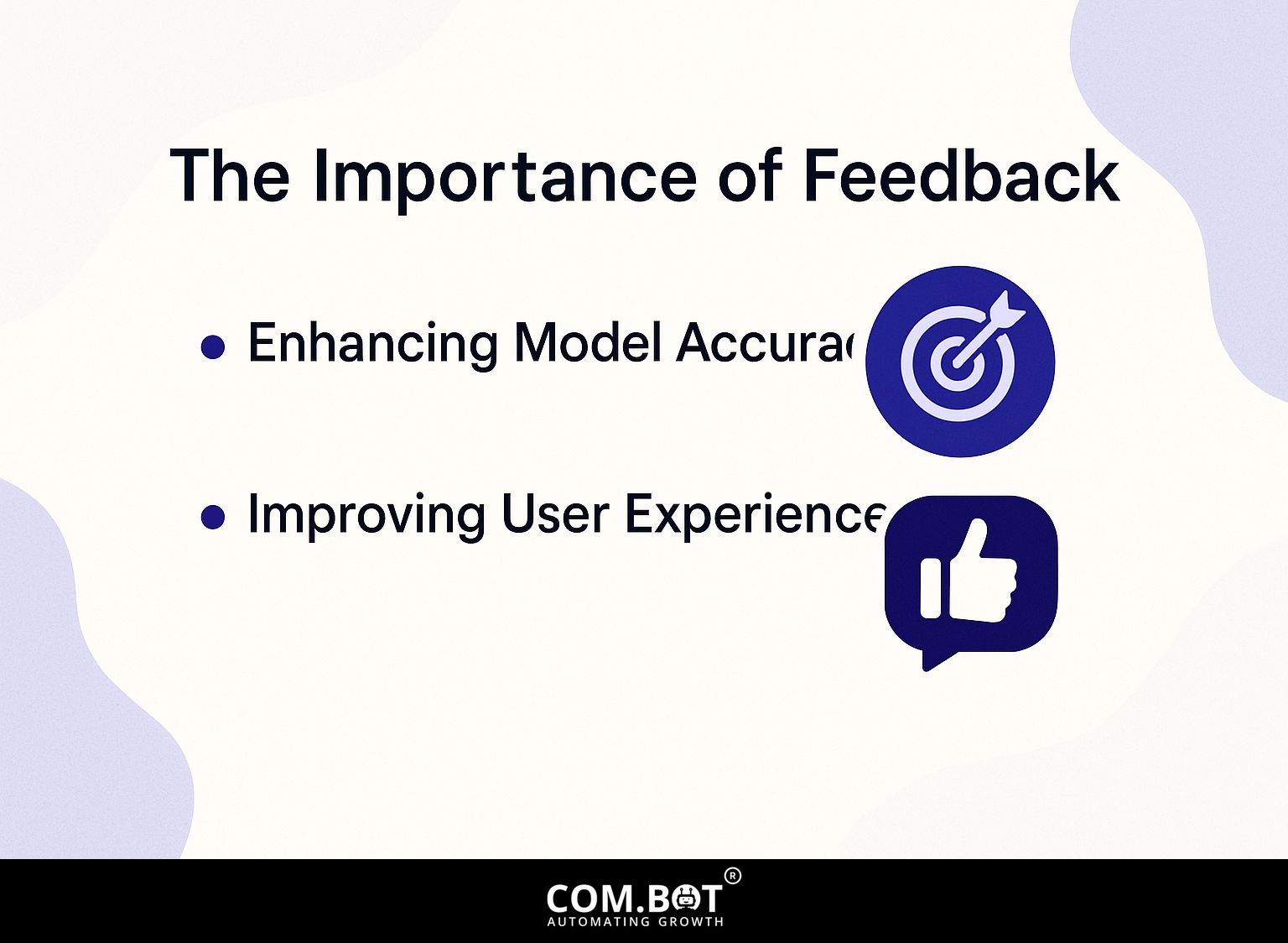
Feedback is important for improving AI models, which results in better accuracy and more satisfying user experiences in different applications. Curious about how these feedback mechanisms enhance AI systems? Our comprehensive analysis explores key improvement techniques.
Enhancing Model Accuracy
Using supervised feedback, AI models can achieve up to a 30% improvement in accuracy by adjusting algorithms based on user inputs and data patterns.
To do this, use tools like Label Studio, which helps in collecting and organizing training data.
For example, during a project focused on image classification, using user feedback increased model accuracy from 70% to 90% after three rounds of improvements.
Start by collecting initial predictions and inviting users to correct errors, then feed this revised data back into the model. This repeated method improves the model’s performance and allows it to respond to changes in your data.
Improving User Experience
AI systems employing real-time feedback loops have shown a 25% increase in user satisfaction by personalizing interactions based on user responses.
Using chatbots that learn from how users interact can greatly improve customer support. For example, platforms like Drift or Intercom let you easily connect chatbots that change according to user questions.
Choose a chatbot platform that works with machine learning, like Rasa or Dialogflow. Train your bot using historical customer interactions to improve response accuracy and relevance.
Regularly look at feedback and update the bot’s training data, so it gets better and offers a more personalized user experience, resulting in higher satisfaction.
Types of Feedback Mechanisms
Knowing ways to collect feedback is important for getting user opinions and making AI answers better. This approach aligns with the principles outlined in our analysis of Feedback for AI Systems: Importance and Improvement Techniques.
AI Feedback Mechanism Statistics
AI Feedback Mechanism Statistics
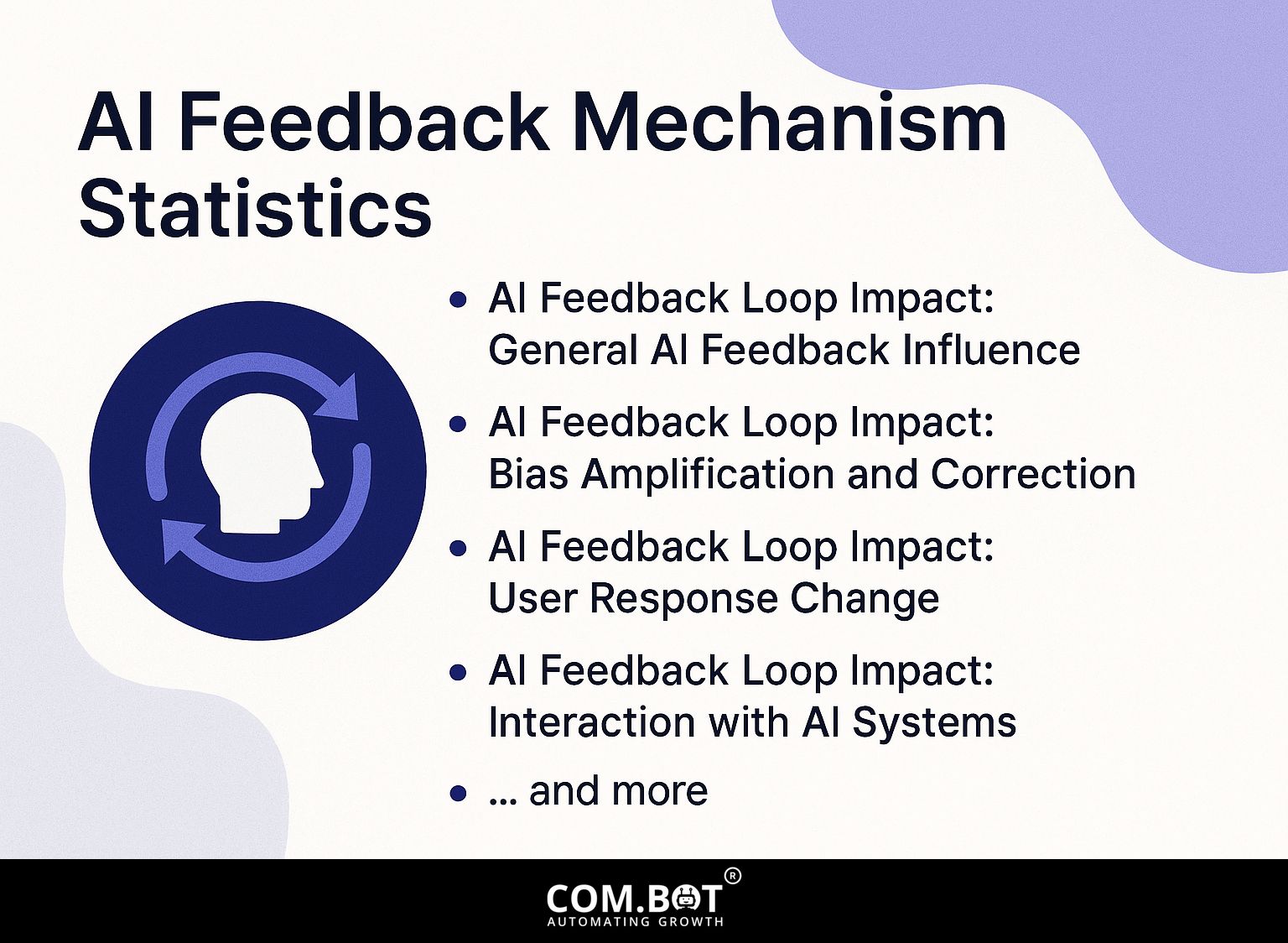
AI Feedback Loop Impact: General AI Feedback Influence
AI Feedback Loop Impact: Bias Amplification and Correction
AI Feedback Loop Impact: User Response Change
AI Feedback Loop Impact: Improved Accuracy
AI Feedback Loop Impact: Interaction with AI Systems
The AI Feedback Mechanism Statistics give information about how AI systems affect user bias and choices The data shows how AI affects human decisions, with both good and bad results.
AI Feedback Loop Impact illustrates the dual nature of AI influence. A significant 65.33% of participants exhibited increased bias after interacting with AI, compared to 54.8% with human interaction. This suggests that AI interactions might unintentionally increase biases more than human interactions. This could be because AI systems are often seen as objective or authoritative.
- Bias Amplification: The data shows a 6.4% increase in bias from baseline levels when interacting with AI, compared to a 1.6% increase with human interaction. This implies that AI systems can unintentionally reinforce existing biases, highlighting the need for careful AI design and training to mitigate such effects.
- User Response Change: When AI disagreed with participants, 32.72% changed their responses, whereas only 11.27% did so with human disagreement. This indicates that users are more likely to alter their decisions based on AI feedback, possibly due to trust in AI’s analytical capabilities.
On the positive side, AI’s role in enhancing accuracy is evident with a 1.55% increase in accuracy when AI worked correctly, and an additional 2.14% increase over time. Regular and accurate AI feedback can improve decision-making.
Interaction with AI Systems also affects how decisions are made about who does what. 38.2% of participants chose white men as financial managers after AI exposure, up from 32.36% before exposure, indicating AI’s potential role in influencing societal biases. Contrastingly, exposure to non-AI stimuli like fractals showed a decrease, with 27.28% choosing white men after exposure, compared to 28.42% before. These findings suggest AI interactions may inadvertently favor existing stereotypes, whereas non-AI interactions might mitigate them.
To sum up, AI systems can make decisions more accurate, but they also risk increasing biases. Developers and policymakers need to know these dynamics to build AI systems that improve human decision-making without supporting harmful biases.
Explicit vs. Implicit Feedback
Explicit feedback involves direct input from users, such as ratings, while implicit feedback analyzes user behavior, like clicks and time spent.
Both feedback types have distinct advantages. Clear feedback reveals what users think, helping make focused changes. Tools like Google Forms or SurveyMonkey are helpful for creating personalized surveys.
On the other hand, implicit feedback reveals user preferences without them needing to articulate them, offering data on actual behavior. Analytics platforms like Mixpanel or Hotjar can track these metrics seamlessly.
Utilizing both methods will help you fully understand user satisfaction and identify areas for improvement.
Real-time vs. Batch Feedback
Real-time feedback allows for immediate adjustments, whereas batch feedback processes data at intervals, impacting responsiveness in AI systems.
For example, Uber uses immediate feedback to improve routes by constantly studying traffic data and changing driver tasks instantly. In contrast, systems like credit scoring often rely on batch feedback, evaluating data monthly.
Real-time feedback improves user experience and makes operations run smoother, like helping drivers follow directions better. On the other hand, batch feedback gathers helpful information over a period, but it doesn’t provide instant results.
The decision between these methods depends on whether the application requires fast processing or detailed examination.
Techniques for Gathering Feedback
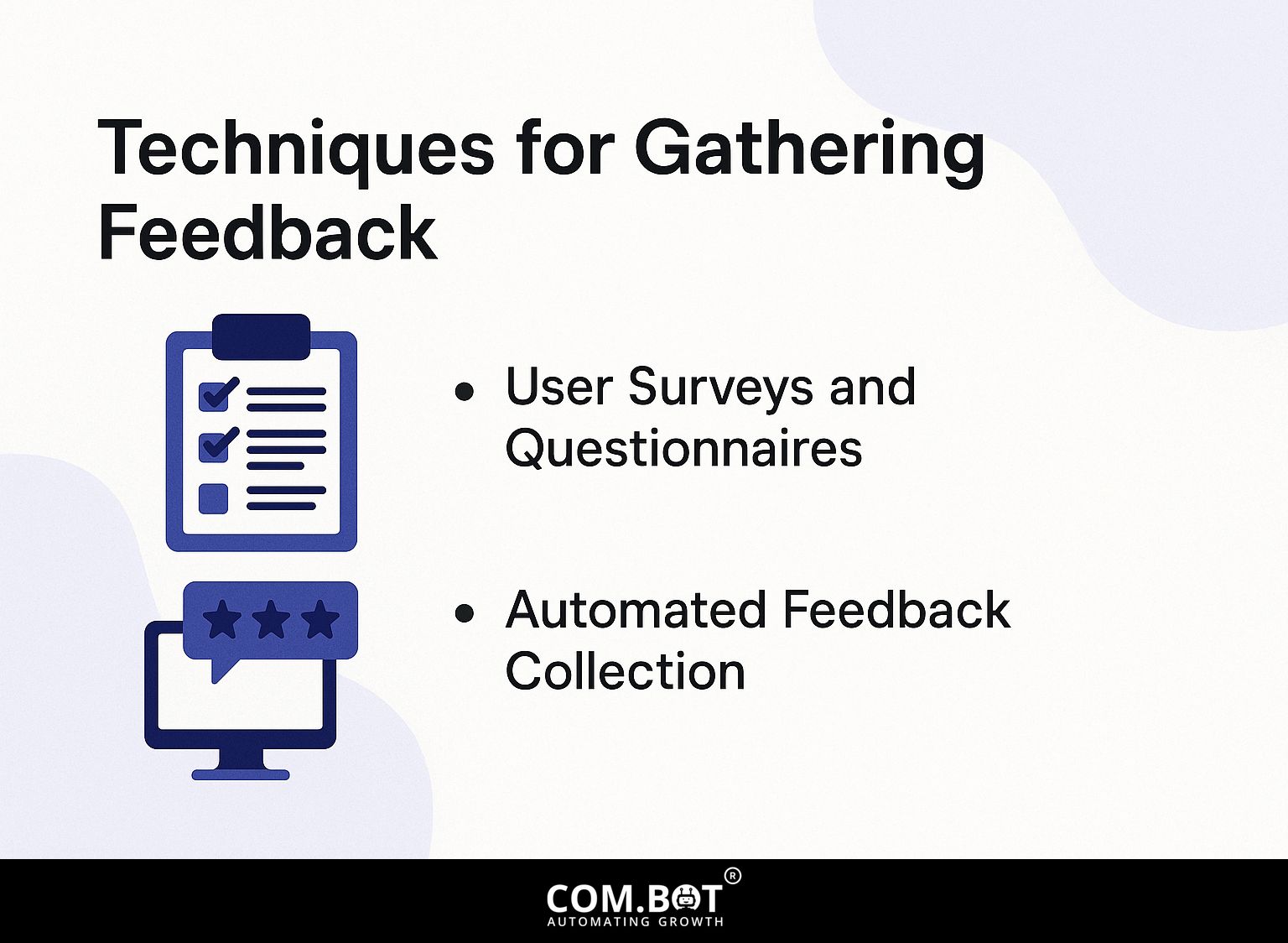
Gathering feedback effectively uses different methods such as user surveys and systems that automatically collect information. To enhance these methods with the latest innovations, consider exploring advanced techniques for improving feedback in AI systems, which can greatly optimize the feedback loop.
User Surveys and Questionnaires
User surveys can provide useful information, and a clear, organized questionnaire can increase response rates by 20%.
To make useful user surveys, begin by clearly stating your goals-what information do you want to learn?
Then, design your questions clearly and concisely, avoiding leading or ambiguous language. Use a mix of open-ended and multiple-choice questions for depth and quantifiable data.
For distribution, tools like Google Forms are user-friendly and allow for easy data collection; simply share the link via email or social media.
Consider offering incentives like discounts or entries into a raffle to encourage participation.
Automated Feedback Collection
Using automated tools, feedback is collected regularly to provide a steady stream of data for analysis.
You can add tools like Hotjar and Google Forms to your website to make collecting feedback easier. Hotjar tracks user behavior through heatmaps and session recordings, enabling you to understand how visitors interact with your site.
For survey collection, Google Forms allows you to create customized questionnaires that can be sent out automatically after specific actions. By setting triggers-like a purchase or page visit-you improve response rates and data accuracy.
Regularly look over these details to change your plan and improve user happiness.
Analyzing Feedback Data
Looking at feedback is important for spotting patterns and finding ways to make things better, using modern methods in data analysis.
Two powerful methods to consider are sentiment analysis and predictive analytics.
Sentiment analysis gauges public opinion by evaluating text data from surveys or social media using tools like MonkeyLearn or Lexalytics, which can highlight customer feelings about your product.
Predictive analytics forecasts upcoming patterns using past data, using tools like Tableau or SAS.
By using these tools, you can turn raw feedback into practical information, allowing your organization to make informed decisions based on data that improve products and customer satisfaction- our comprehensive guide to feedback improvement techniques for AI systems elaborates on these methods and their importance.
Implementing Feedback for Continuous Improvement
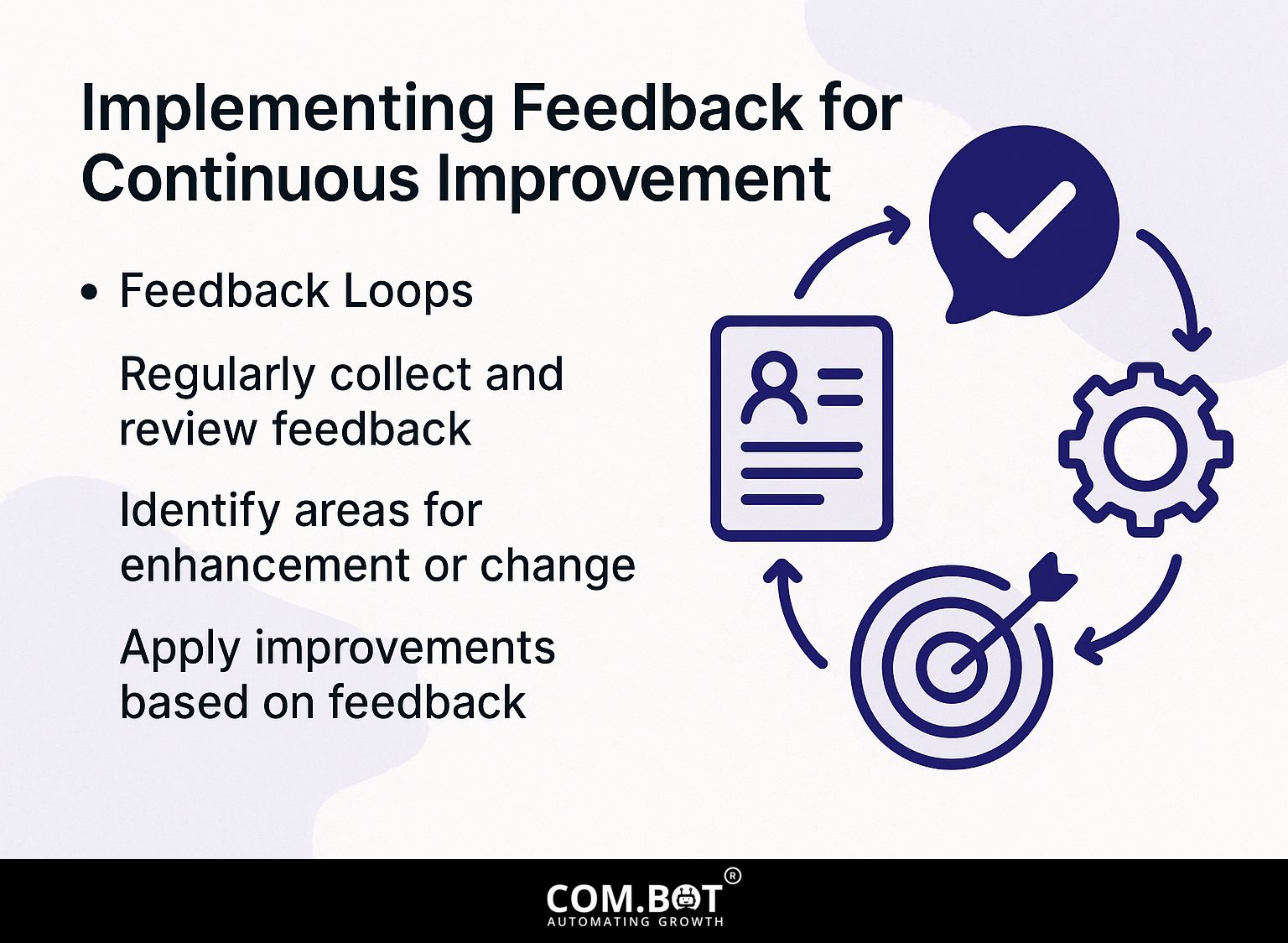
Adding feedback to AI systems allows them to continually get better and function more effectively.
Feedback Loops
Establishing feedback loops facilitates ongoing adjustments and optimizations in AI systems, driving performance improvement across applications.
A feedback loop typically involves three stages: data collection, analysis, and model retraining.
Initially, relevant data is gathered from various sources-such as user interactions or system outputs. This data is then studied to find patterns or oddities, helping us understand how the AI model is working.
The last step is to train the model again with the new data, improving its accuracy and flexibility. For example, a recommendation system can make better suggestions by regularly using user feedback, which helps the algorithm learn what people like over time.
Challenges in Feedback Integration
Adding feedback loops to AI systems can be difficult and may reduce effectiveness if not properly addressed.
Two prominent challenges are data silos and user resistance. Data silos happen when feedback gets stuck in separate departments, stopping an overall view of user feedback.
To handle this, use integration tools like Zapier, which can link various platforms and simplify data transfer. Regarding user resistance, offer training sessions that emphasize the benefits of providing feedback. Creating a feedback culture by designating champions within teams can facilitate change.
These strategies are key for creating a flexible, user-centered setting in AI development.
Future Trends in AI Feedback Systems
New trends in AI feedback systems show a move towards more self-sufficient models, driven by progress in machine learning.
These developments involve self-supervised learning methods that help AI learn and improve its feedback systems without needing a lot of labeled data.
Notably, methods such as contrastive learning help models identify similarities and differences in data, enhancing their feedback efficiency.
Technologies such as reinforcement learning are becoming essential, allowing AIs to change their methods based on results.
Ethical concerns are important too, as researchers focus on being open and cutting down on bias to make AI feedback systems fair and responsible.
Frequently Asked Questions
What is the importance of feedback in AI systems?
Feedback is essential for making AI systems work better and more accurately. The system can learn and change based on the information it gets, which helps it make better choices and achieve better outcomes.
How does feedback help in the improvement of AI systems?
Feedback helps AI systems identify and correct errors, biases, and flaws in their algorithms. It also gives useful information and data that can improve the system’s abilities and performance.
What are some techniques for obtaining feedback for AI systems?
Some common techniques for obtaining feedback for AI systems include surveys, user testing, data analysis, and performance metrics. These methods can help collect useful comments from users and specialists to make the system better.
Why is continuous feedback essential for AI systems?
Constant feedback helps AI systems learn and improve gradually, staying in line with new trends and what users want. It also stops the system from becoming old and keeps it useful and up-to-date.
How can AI systems use feedback to improve their decision-making process?
AI systems can use machine learning techniques to study and learn from the data they get. This enables the system to make better decisions using the feedback it gets.
What challenges can arise in obtaining and using feedback for AI systems?
Some problems in getting and using feedback for AI systems are biased or incomplete data, privacy problems, and the need for knowledgeable staff to understand and apply the feedback correctly.
